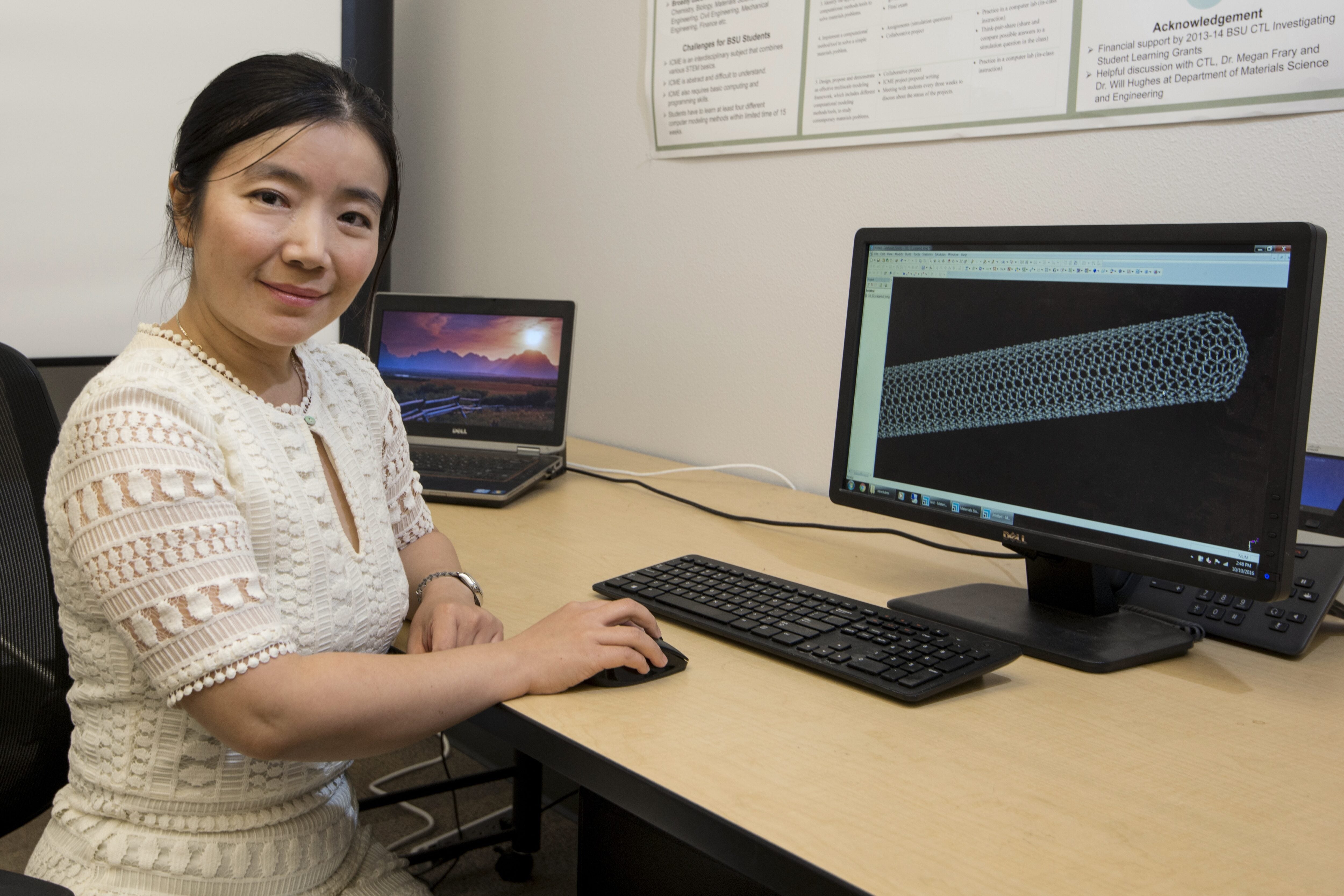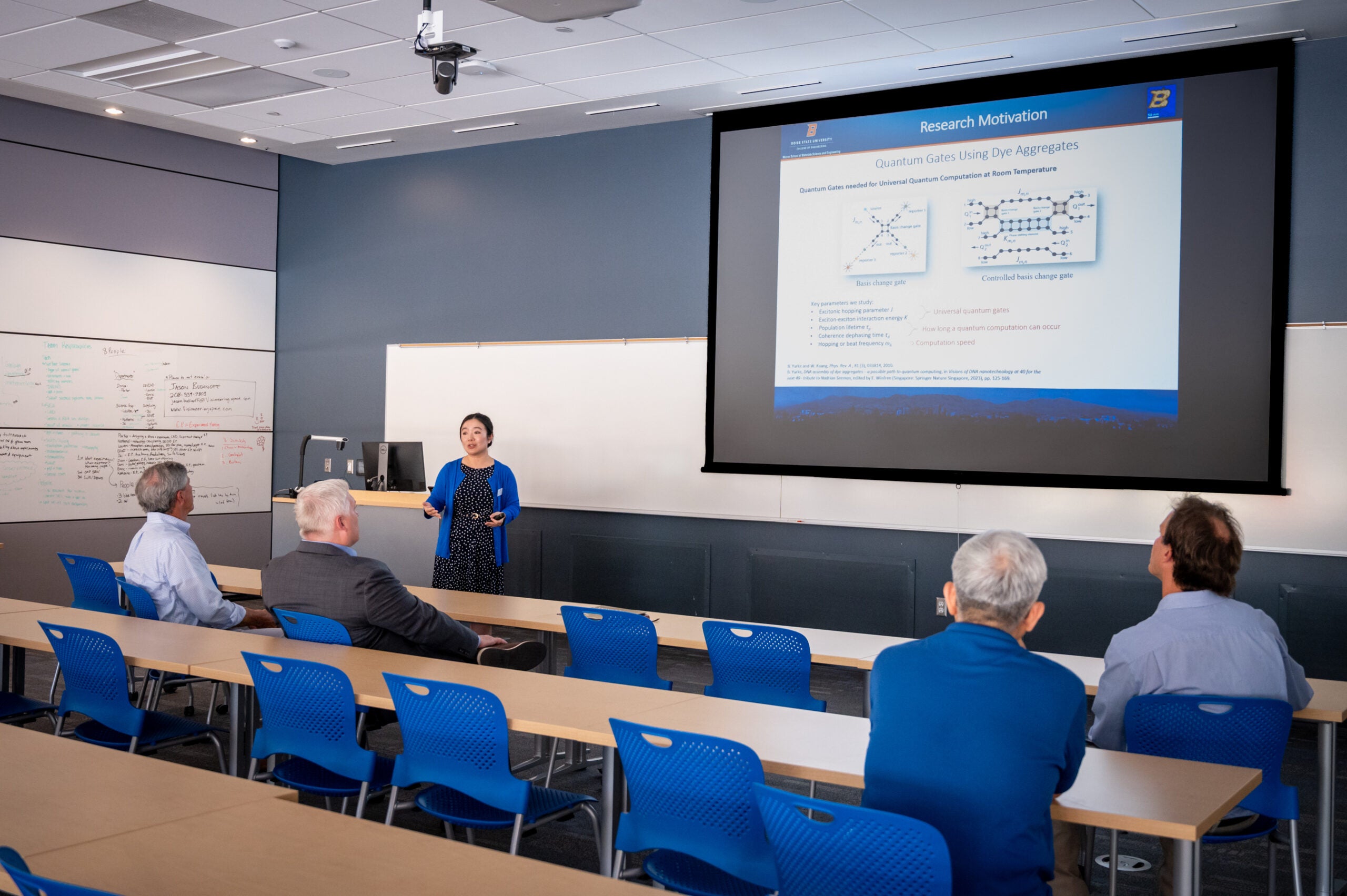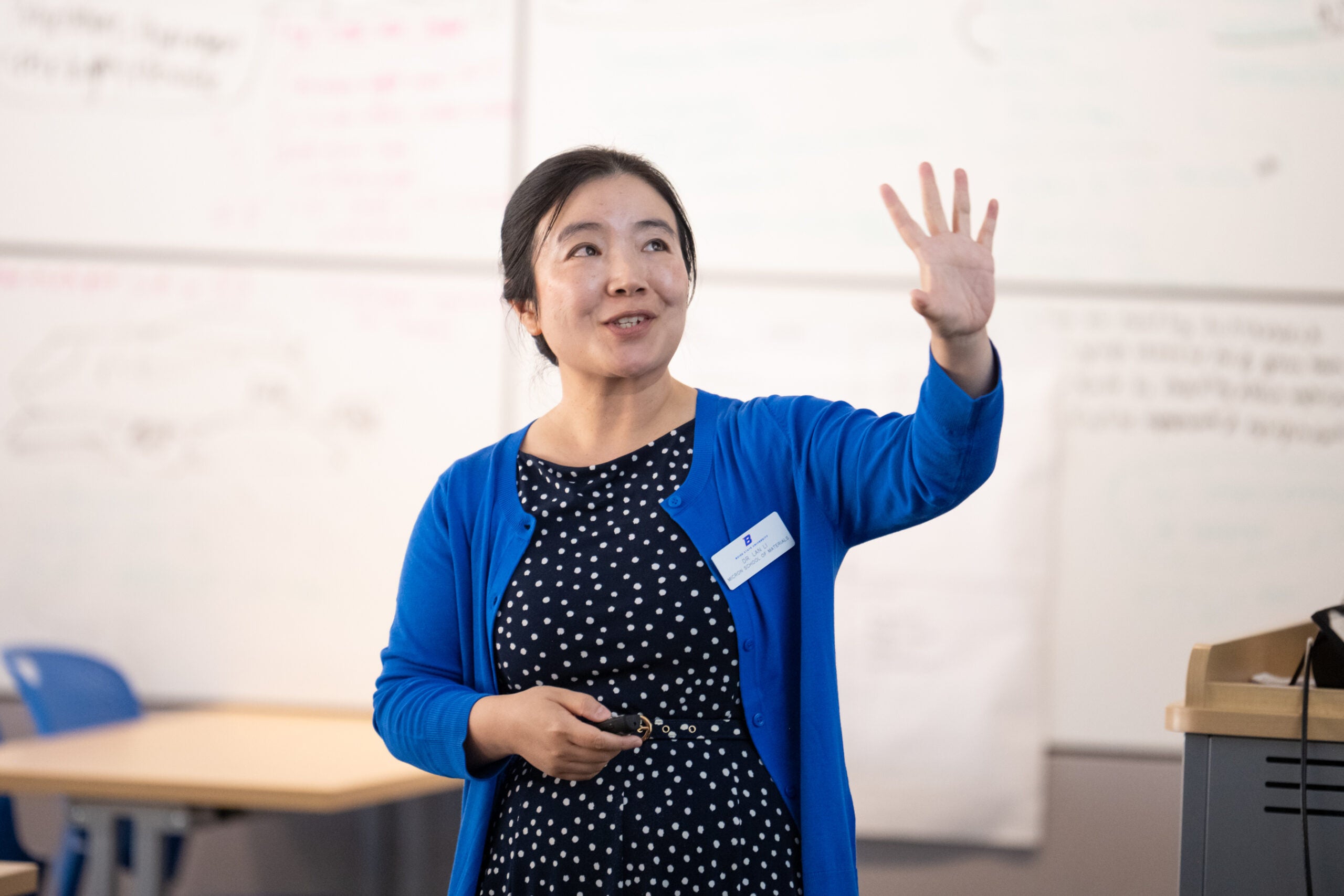
“When I was an undergraduate, I designed a robot arm to play table tennis as a part of my senior project. That was the first time I had come across machine learning and artificial intelligence.”
For Lan Li, this moment as a senior at the University of Central Lancashire in Preston, United Kingdom, marked the beginning of a journey into a field that would define her career. Now as professor of materials science and engineering at Boise State, Li’s passion for computational modeling, artificial intelligence and problem solving drives her forward as a researcher and an educator.
In today’s tech-driven world, AI is becoming increasingly important in supporting innovation across industries. By improving data-driven decision making, reducing human error and helping organizations adapt to an advancing world, AI is transforming how we approach complex problems. Li’s work exemplifies AI’s potential as she leads research at the intersection of computational modeling and machine learning.

At Boise State, Li’s research focuses on designing electronic and energy-related materials with computational models – programs that simulate and study complex systems. Her team uses machine learning, a branch of AI that enables computers to identify patterns and optimize decision-making, to enhance the efficiency and accuracy of a material’s design.
“One of the projects my group is working on is to design materials that can be used to build energy-efficient and time-effective quantum computers,” she explains. “In order to do this, we need to consider many factors. For example, we know that current quantum computing approaches generally require extremely low operating temperature, noise and humidity conditions and large device footprints. I use computational modeling and machine learning techniques to select and design materials, such as conjugated organic molecules – dyes that can absorb and emit light – and their aggregates templated by DNA scaffolds, to overcome those challenges.”
For Li, AI’s adaptability across different fields is one of its greatest strengths. This versatility drives her work in I-CREWS (Idaho Community-engaged Resilience for Energy-Water Systems), Idaho’s National Science Foundation Established Program to Stimulate Competitive Research.
As a co-lead of the I-CREWS’s modeling team across Boise State University, Idaho State University and the University of Idaho, the group uses physics-based computational models and machine learning to analyze how population growth, technological advancement and other factors affect energy-water resilience.
“For example, we use machine learning models to analyze historical data to find patterns, provide more detailed insight and predict the future,” she said. “The current population in the Treasure Valley is growing very fast. How does that impact water usage in the next five to 30 years? Will factors such as industry growth and emerging technologies play a role?”
Questions like these drive Li and her team to provide insights that support informed choices for Idaho’s future.

Beyond her research, Li is dedicated to advancing understanding of AI’s significance for our future.
“There are many factors that impact what happens in the world and it becomes increasingly complex. People need to be ready to react if something happens,” she said. “It is very important for humans to know about [AI] because we can create policy or change life behaviors to be proactive or prevent the risk of failure in the future.”
As an educator, Li is passionate about removing barriers between disciplines, encouraging students to broaden their expertise, and expanding future career choices. She hopes her students carry these lessons forward, knowing their influence extends beyond the classroom.
This publication was made possible by the NSF Idaho EPSCoR Program and by the National Science Foundation under award number OIA-2242769.